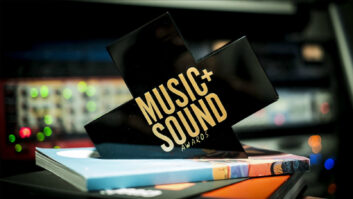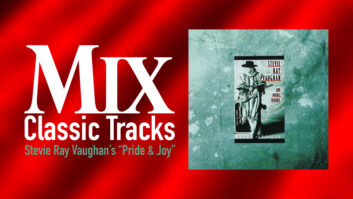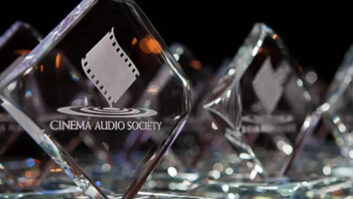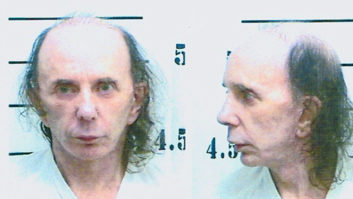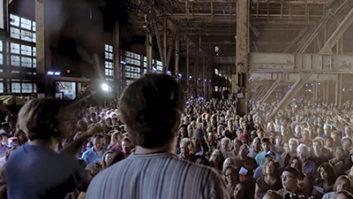Mention Leonard Cohen to the average pop fan of a certain age and you’ll likely evoke an exaggerated, croaking, mocking line or two from the songs “Suzanne” or “So Long Marianne,” both from his 33-year-old first record, Songs of Leonard Cohen.
That the 67-year-old native Canadian, who first became something of a pop star as an iconoclastic, precocious young Montreal poet and novelist, should be so strongly identified with his earliest songs is testament to the stealth-like quality of his unusual but successful career. Although Cohen has sold more than 12 million records worldwide (in the CD era alone, according to his record company, Columbia), in America, starting in the late ’70s, he became mired in a cult artist’s career path for a decade. Large and extremely enthusiastic followings remained primarily in Europe and Scandinavia.
That all changed, however, in 1988, when the self-produced I’m Your Man put Cohen solidly back on the American musical map. This album, with its sophisticated pop polish; wry, wicked humor; and soulful songs, eventually sold nearly two million copies worldwide.
Five years later, The Future rewarded patient fans with more impossible-to-ignore tracks, several of which found their way onto the soundtracks of the films Pump up the Volume, Natural Born Killers and others. In the title song of The Future, which Cohen has said was inspired by the end of the Cold War and the chaos he felt would certainly ensue, he wrote and sang the now-more-than-ever chilling words, “I’ve seen the future, brother, it is murder.”
It has been nine years since The Future, and the only Cohen releases since then have consisted of two live recordings. Cohen, who has had a lengthy association with Zen Buddhism, spent more than five of those intervening years at a Southern California Zen Buddhist monastery atop Mt. Baldy.
“I was nearly 60 when my last tour ended, and my teacher Roshi was nearly 90, so it seemed like an appropriate moment to spend more time with him,” Cohen says from his Los Angeles home. “When I came down from Mt. Baldy about two years ago, I met with Sharon Robinson.” (Robinson had sung on Cohen’s records and tours, and they had written two of his best recent songs together — “Everybody Knows” and “Waiting for the Miracle.”)
Cohen and Robinson talked about ideas for songs, and eventually, when Cohen went to one of her son’s piano recitals, he asked Robinson if she would collaborate with him on the next record. Eventually, her role expanded to that of producer, co-writer on all the songs, and musician playing all the instruments via samplers (aside from Bob Metzger’s electric guitar part, on one track).
The result of that partnership is an unusual and spare recording. Ten New Songs features only Cohen’s lead vocals Robinson’s densely overdubbed backing vocals and the above-mentioned actual musical instrument on one track. Robinson used MIDI gear and sampling software to create the rest of the music.
The project began when Cohen gave Robinson poems and lyrics he’d written, mostly while at the Zen center, along with some rudimentary demo tracks he’d made there using what he calls a “recording box” (assembled by Steve Lindsay, who produced some tracks on The Future). The unit consisted of a Mackie 12×2 board, a Neve 1272 mic preamp, a Tascam DA-88 (which was upgraded for Ten New Songs to a DA-78) and one of Cohen’s stage mics, either a Beta 57 or an AKG 535. From the material Cohen proffered, Robinson selected pieces she thought would work as songs, conferred some more with Cohen, and then began writing the melodies to the pieces they selected.
Robinson then created simple instrumental tracks in the MIDI format and added her own scratch lead vocals, cutting to a hard drive at her Pro Tools-based home studio, Small Mercies Studio. The songs were transferred to a Tascam MDM for use at Cohen’s home studio, Still Life Studios. “A rough mix was put onto two tracks of the 8-track Tascam tape; the other six tracks were left open for Leonard’s vocals,” explains the album’s engineer and mixer, Leanne Ungar, another longtime Cohen associate.
Then, Cohen began adding his lead vocals at his home studio. Ungar, who had put together Cohen’s studio, also served as engineer on Cohen’s vocal recordings for the first few songs, but soon left the recording to the vocalist. “Leonard is very computer-savvy; he could learn Pro Tools,” Ungar explains, noting that Cohen eschewed cutting his vocals to a hard drive via Pro Tools because he was more comfortable with the operation of the Tascam. Another reason for using the Tascam was that a hard drive would have made too much noise in Cohen’s one-room facility. Cohen’s vocals were recorded on his new Tascam DA-78, in 24-bit mode.
However, noise from a hard drive wasn’t the only ambient concern. Tracking final vocals in Cohen’s home studio (which, despite its reasonably high-tech trappings, Ungar says “is not acoustically isolated”) was an environmental challenge. “There were dogs barking, birds singing, garbage trucks. Also, occasionally Leonard would forget to turn off the Jacuzzi that is adjacent to the studio — the studio resides in a second story Cohen added above his garage, next to his Los Angeles home. When you’re involved in doing vocals and your ears are full of track, it is easy to not notice these noises,” Ungar says. She removed most of these sounds, but says she can still hear their remnants on the finished CD.
Ungar has worked with Cohen since 1973, when she was an assistant engineer on the exceptional New Skin for the Old Ceremony, so she is more than familiar with the unusual Cohen vocal style. To find the right instrument to capture his gravelly voice for Ten New Songs, she considered several microphones and ultimately decided on the Neumann U87. “The Future was all U67,” she says, “but it is not easy finding a good 67. The U87 married well with Leonard’s voice.” Ungar matched the U87 with the Neve 1272 mic preamp from Cohen’s portable recording box.
Asked about Cohen’s startlingly gritty voice, Ungar laughs and says, “Leonard says it’s cigarettes, but I hear a constant deepening. If you compare his first and second records, he’s already down by about one-fifth of an octave by the second outing.” She adds that her equalization of his vocals on the new record varied according to the mood of the song, pointing out that Cohen’s voice is rendered with a lot of low end on some tracks and much less so on others.
Cohen approached the vocal sessions strategically, due to the limits of the studio and the inward-looking nature of the material. To facilitate relatively noise-free recording and complement the mellow nature of the piece, he tracked his vocals during the quietest times of day: very early morning, around four or five a.m., or sometimes even earlier. “I had to start singing before the birds, and the traffic on Olympic, and before my daughter’s dogs started barking [Cohen shares his home with his adult daughter]. It was very relaxed at those times, four or five a.m., to come in and find the right place to stand or sit, and have the right drink or smoke in your hand, lean back, go back, erase, go forward. It was a very luxurious way to do the vocals,” Cohen recalls with evident pleasure.
“I was able to take the time to find exactly the right mood for the narrator, until the vocals married with the track and the song’s content, so the voice represented the song rather than simply unfolded it,” Cohen continues. Cutting vocals at home was also much less expensive, he does not hesitate to add.
Cohen describes Ten New Songs as “deceptively spare, like a Sade record, with an agreeable groove from beginning to end. You can lean on it, relax into it. There are doors and windows you can enter if you have the time, and I don’t think there’ll be disappointment with the furniture and appointments. It may seem to be a spare outer surface, but with investigation much filigree and ornament can be discerned. It may not be apparent, but it is there.”
Does this spare, simple soundscape reflect the experience of his nearly continuous five-year stay at the Zen center? “I guess there is a relationship to the life I was leading,” Cohen says. “I wasn’t anywhere else. It is hard to see, from the inside, the influence of the ordinary life one is leading,” he adds. Both Ungar and Robinson agree that the record’s spare sound and relaxed feel come from the artist’s current state of mind.
When Cohen was satisfied with a vocal track, the Tascam tape was transferred to his Macintosh 450MHz G4 computer via the Pro Tools Mix Plus software, which was set for 24-bit, 48k recording. The removable hard drive, a Cheetah 10,000 rpm Seagate, was then taken to Robinson’s studio, where she completed the arrangements, adding sampled instruments and her luscious, often-complex background vocals.
In keeping with the long-held Cohen schema of contrasting his gritty voice against the lush backing of several female vocalists, some of the songs feature as many as 20 backing vocal tracks, all performed by Robinson; many songs have between six and 12 such tracks, she notes. This took “many hours in my studio, with lots of early and late-hour sessions.” She often found herself singing doubled three-part harmony. “I don’t like to double the same voice on the same side,” she explains, noting that this often meant doing three different parts for both the right and left sides of the stereo image.
“I stacked my vocals differently for each song, depending on the arrangement and the mood I was trying to create,” Robinson elucidates. “Some songs were more intimate and called for only two or three tracks of background vocals; others were less so, or the arrangements were more complex, and so I used as many as 20 vocal tracks. But there’s a very close-up feeling to this record, so I tried not to do too much doubling. I wanted to keep it real, and provide just enough to enhance and highlight Leonard’s vocals.” Her microphone was a Neumann TLM 103: “A copy of the great U87, minus some of the costlier features,” Robinson notes.
“For recording, I used Pro Tools Mix Plus with one 888 interface, running all of the samplers and synths through a 1622,” explains Robinson. “I did all the sequencing in Pro Tools 5.0, and printed all of the parts so they could be moved back and forth on hard drives between my studio and Leonard’s. The third-party plug-ins we used included TC Mega reverb, a Wave Renaissance package, Focusrite compressor and EQ, and a Lexicon reverb.”
However, by then the path of Ten New Songs had veered mightily from the original plan. When they started, Cohen, Robinson and Ungar planned to hire musicians and background singers and complete the project in a conventional manner in a regular recording studio. Initially, “My vocals were supposed to be just sketched out ideas, to be sung in sessions by others,” Robinson says. But then a curious thing happened: Cohen fell in love with the sound of the sampled instruments and Robinson’s layered vocal parts. “We decided that bringing in musicians and singers would actually be a compromise,” Robinson explains. “When Leonard heard the first completed track, ‘A Thousand Kisses Deep,’ he was enthralled,” adds Ungar.
In keeping with the home-brewed nature of the project, the rough mixes ended up being pretty close to the finals. Mixing took about three weeks at Cohen’s studio, using Pro Tools Mix Plus and Yamaha MS 60 speakers. (This followed an attempt at mixing in analog at a regular studio, but the team found that the sound changed too much, and the idea was abandoned.) The mix was about “working carefully, laying in sounds with delicacy. That took time but there wasn’t a lot of reworking,” says Ungar. Most of Leonard’s vocals are contiguous performances with some comping of words or phrases. Compression was hardly used at all: “With Pro Tools, you can ride each word so carefully you don’t need to squash the signal.”
Reverb plug-ins, used for most vocals, instruments and percussion, were initially D-Verb, but that was replaced with Lexiverb. “D-Verb had a dark, unspacious sound,” says Ungar. “Lexiverb opened it up, although sometimes we did go back to D-Verb.”
Convinced, from their attempt at mixing in analog, that they should stay in digital all the way through, the team went to Portland, Maine, to master at Bob Ludwig’s Gateway Mastering Studios.
Cohen acknowledges that there are pitfalls to making records at home. “I could see where the sense of relaxation could induce a stupor. However, Sharon and Leanne and I share an obsessive interest in detail, and [working at home studios] gave us the time and space to concentrate on details and produce the kind of fully completed record that we wanted.”

